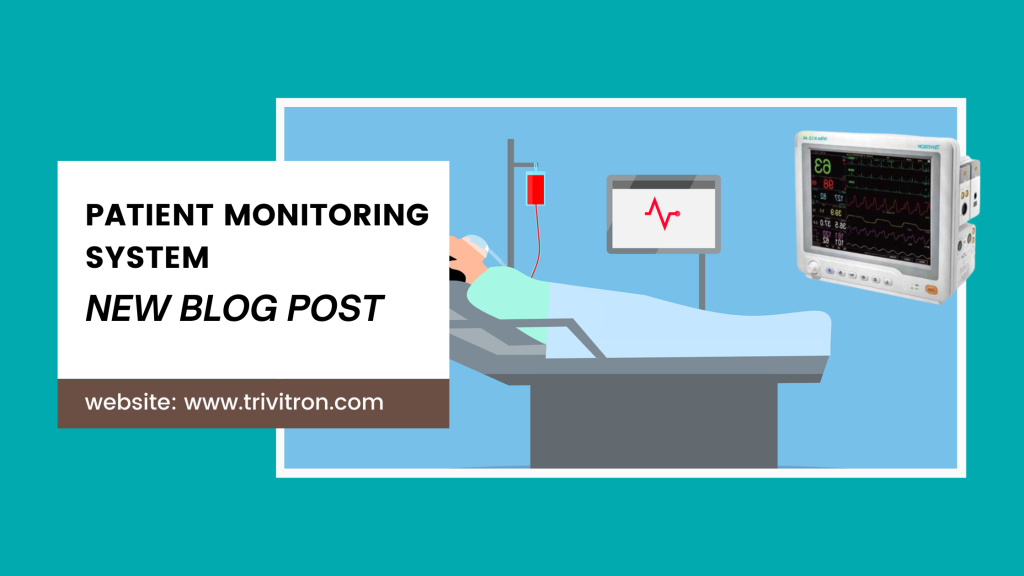
Chronic diseases, such as heart disease, diabetes, hypertension, and chronic obstructive pulmonary disease (COPD), are a major health burden worldwide. These long-term conditions require ongoing management to control symptoms, prevent complications, and improve overall quality of life. Patient monitoring systems are revolutionizing chronic disease management, moving beyond traditional hospital settings to empower patients and support more effective care.
How Does Patient Monitoring Help?
Patient monitoring devices and systems enable patients to actively track their health indicators outside of hospitals or clinics. This continuous data collection and feedback provide several advantages for chronic disease management:
Early Warning Signs: Patient monitors can detect subtle changes in vital signs or other parameters, indicating a potential flare-up or worsening of the condition. This empowers patients and their healthcare providers to intervene early, preventing complications or hospitalizations.
Tailored Treatment Plans: Continuous monitoring generates a detailed picture of a patient’s condition over time. This data informs healthcare providers in refining treatment plans, optimizing medication dosages, and personalizing lifestyle recommendations.
Patient Engagement and Empowerment: By actively participating in monitoring their health, patients with chronic diseases feel more in control. This increased sense of agency promotes adherence to treatment plans and healthier lifestyle choices.
Remote Patient Monitoring (RPM): RPM technology allows patients to transmit health data from their devices to their healthcare providers remotely. This reduces the need for frequent clinic visits and gives clinicians a continuous, detailed picture of patient health between appointments.
Types of Patient Monitoring for Chronic Diseases
Patients use a range of monitoring devices depending on their specific condition:
Blood Pressure Monitors: Essential for managing hypertension, providing regular readings for tracking trends and medication effectiveness.
Blood Glucose Monitors: Allow patients with diabetes to monitor blood sugar levels closely, adjusting diet and insulin as needed.
Weight Scales: Crucial for heart failure management as weight fluctuations can indicate fluid buildup, a potential sign of worsening condition.
Pulse Oximeters: Measures oxygen saturation, important for patients with COPD or other respiratory conditions.
Wearable Devices: These can track activity levels and heart rate, providing valuable insights into physical wellness and overall disease management.
Trivitron Healthcare: Partnering in Chronic Disease Management
Trivitron Healthcare understands the significance of patient monitoring in chronic disease management. Their range of patient monitors is designed with usability and connectivity in mind, supporting effective at-home monitoring. Some key features include:
Portability and Ease of Use: Trivitron’s lightweight and compact patient monitors are designed for convenient use at home, empowering patients to take charge of their health monitoring.
Clear Data Visualization: User-friendly interfaces provide clear displays of readings, trends, and parameters, aiding patient understanding and communication with healthcare providers.
Connectivity: Many Trivitron monitors facilitate data transmission into healthcare systems, supporting RPM and streamlining the flow of vital information to clinicians.
Considerations for Success
Effective use of patient monitoring in chronic disease management goes beyond the technology itself:
Healthcare Provider Involvement: Close collaboration between patients and their healthcare team is vital for interpreting the data and making informed treatment decisions.
Patient Education and Support: Patients need proper training on how to use the device correctly, interpret results, and respond appropriately to alerts or changes in readings.
Data Security: Protecting patients’ sensitive health information must be a top priority when utilizing connected monitoring devices.
The Future of Chronic Disease Care
Patient monitoring systems hold immense promise in transforming chronic disease management. Advancements in wearable tech and RPM will continue to provide a clearer picture of patients’ health outside traditional care settings. By combining real-time data with comprehensive support, healthcare providers can offer more personalized care, and patients gain an increased sense of control and well-being in managing their conditions. Companies like Trivitron Healthcare play a crucial role in making patient monitoring technology accessible, with affordability in patient monitor price remaining a key consideration for widespread adoption.